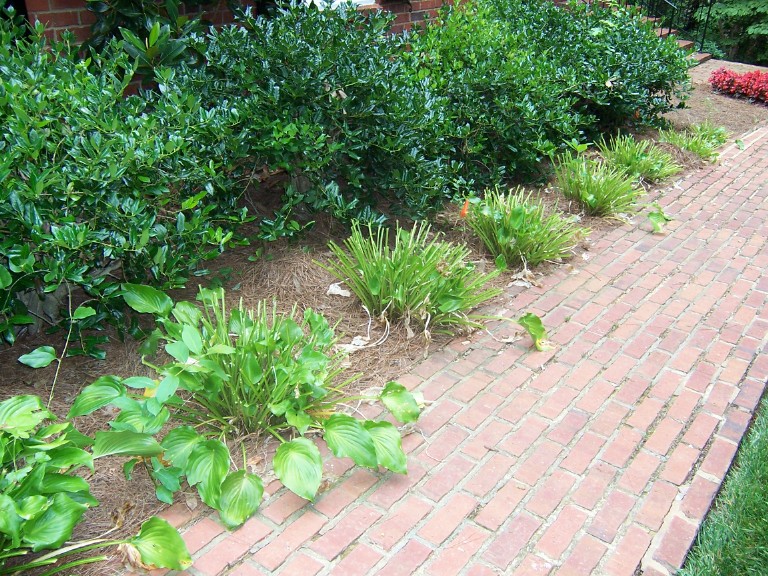Deer – Summary of Different Control Techniques and Ideas

Rule #1 for minimizing deer damage to plants. Deer will damage (eat or rub) any plant you can think of. What you do about it depends on how much damage you can tolerate.
If you have garden plants that you love and have found that the deer love them too, here are a few protective strategies to consider:
NATURAL AND PHYSICAL PROTECTION Rather than reach way back on the display shelf for the biggest piece of pie, I often settle for the smaller, easier-to-manipulate desserts up front. Deer are just as lazy when browsing. Try surrounding deer delicacies with repellent plants like hellebore, lantana or St. John’s wort. Maybe they will go elsewhere to nibble less-important greenery.
My colleague Dr. Gary Wade reported some success one year surrounding his hosta with a thick layer of pine cones. He observed that the deer didn’t like walking on material that didn’t provide a sure footing.
Farmers use closely-spaced, parallel steel pipes laid across a roadway to keep cows in their pasture. These cattle guards work similarly to the pine cones above but wouldn’t be practical in a landscape. Instead, consider laying a flat, four foot wide perimeter of chicken wire around your favorite beds. The wire could be held a few inches off the ground using bricks or slender pine limbs. Approaching deer might be repelled by the unfamiliar feel of the fence wire on their hooves.
TASTE AND ODOR REPELLENTS You have likely already heard folk tales touting coyote urine, bar soap, mothballs and human hair. While they all may work for a short period, they do not remain effective for long. A deer quickly notices that though the rose bed smells “fresh as an Irish Spring”, no harm comes when he feeds in such fragrant surroundings. Smell repellents must be changed weekly to be effectual.
Taste-based repellents, such as hot sauce, and extremely bitter compounds seem also to have a short period of repellence. While they may keep Bambi at bay for a few days, as hunger mounts even a bad-tasting hosta is better than no food at all. Several gardeners report that PlantSkyyd and Liquid Fence work for them. Repellex (click for example) is a new product using a special solvent and capsaicin (hot pepper) to repel deer.
One repellent that has shown promise is putrescent egg solids. Sold as “Deer Away” or “Big Game Repellent”, the smell is not perceptible to humans. The material is mixed with a water-resistant latex carrier so it stays on plants for several weeks.
You can make your own egg-based repellent by adding four eggs to a quart of water. Strain the eggs through cheesecloth or a kitchen strainer before mixing, in order to avoid clogging your sprayer. Apply to susceptible plants every two weeks.
FENCING Eight-foot high fences are beyond the means of most gardeners but a short electric fence, managed correctly, can be effective. Of course, the first thing to understand is that an electric fence doesn’t kill an animal. The electricity carried by the wire is high voltage but low wattage. That means a deer will be startled by the “ZAP!” but not harmed. The purpose of an electric fence is to educate the deer to expect something unpleasant when they come near it.
Wild deer are quite difficult to capture and train – but you can instruct them on proper behavior on your property by installing a “Peanut Butter” electric fence. Details are available from the Auburn University Web site mentioned below.
Electric fences aren’t maintenance-free. If the wire touches a nearby limb or grassy undergrowth, electricity will go there – not to the deer. When you install your fence, clear a strip of ground three feet wide on either side of the fence so you can walk along it every week to keep the wire clear.
CAUTION: Do not use an electric fence where children or un-knowing visitors could come in contact with it. Post signs identifying your fence at intervals around it. Check local ordinances before installing.
MORE INFORMATION
Comparative Analysis of Deer Repellents
Comparative Evaluation of Deer Fences
Homeowner Evaluations of Repellex
Egg-based Deer Repellent Research
Plantskydd Deer Repellent (blood meal)
“Peanut Butter” Electric Fence for Deer Control
Controlling Deer in Landscapes
EVEN MORE DEER CONTROL TOPICS AND IDEAS





















